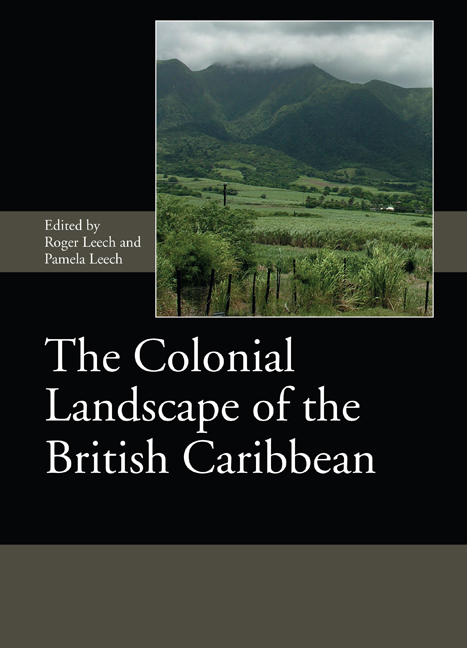7 - An Archaeological Survey of Sugar Plantations in St Kitts, 2004 and 2005
Published online by Cambridge University Press: 31 March 2021
Summary
SUMMARY: An archaeological field survey of just over 2600 hectares, within the parishes on St Kitts of St Mary Cayon and Christ Church Nichola Town, part of a British Academy funded project undertaken by the University of Southampton and National Museums Liverpool, focused especially on the survey of slave village sites. Uniquely for the British West Indies, McMahon's map records the position of all the slave villages in St Kitts in 1828 shortly before emancipation. Examination of the villages in the field has shown there are some recurrent elements in their location.
INTRODUCTION
In 2004 and 2005 a field survey was undertaken in two parishes on the north-east coast of St Christopher (St Kitts) by archaeologists led by Professor Roger Leech of the Department of Archaeology, University of Southampton, UK. The survey covered the northern part of St Mary Cayon and all the neighbouring parish of Christ Church Nichola Town with an overall study area of 2,600 hectares (Fig. 7.1). The survey formed part of the research project funded by the British Academy to assess the archaeological evidence for the early colonial settlement and landscape of the two Eastern Caribbean islands of Nevis and St Kitts described above (p. xix–xxii).
The project as undertaken on St Kitts had three main research objectives within the strategic objectives set out in the Preface (p. xxi–xxii), specifically here: -
1 To undertake a reconnaissance survey of the 17th-and 18th-century colonial landscape of an area in the two parishes.
2 To identify the extent to which plantation centres have been abandoned or have changed through time, from the 17th to the 20th centuries.
3 To determine the archaeological and above ground remains of the slave villages for the plantations. -
The survey area was defined by the major landscape features of the Cayon River to the south-east and St George's Ghut on the north-west. Historically, the Cayon River formed the boundary between the central, English, and the southern, French, divisions of the island. Chronologically, the survey concentrated on the period after the introduction of sugar to St Kitts in the mid 17th century up to the introduction of steam technology for sugar processing in the 19th century.
- Type
- Chapter
- Information
- The Colonial Landscape of the British Caribbean , pp. 131 - 172Publisher: Boydell & BrewerPrint publication year: 2021

